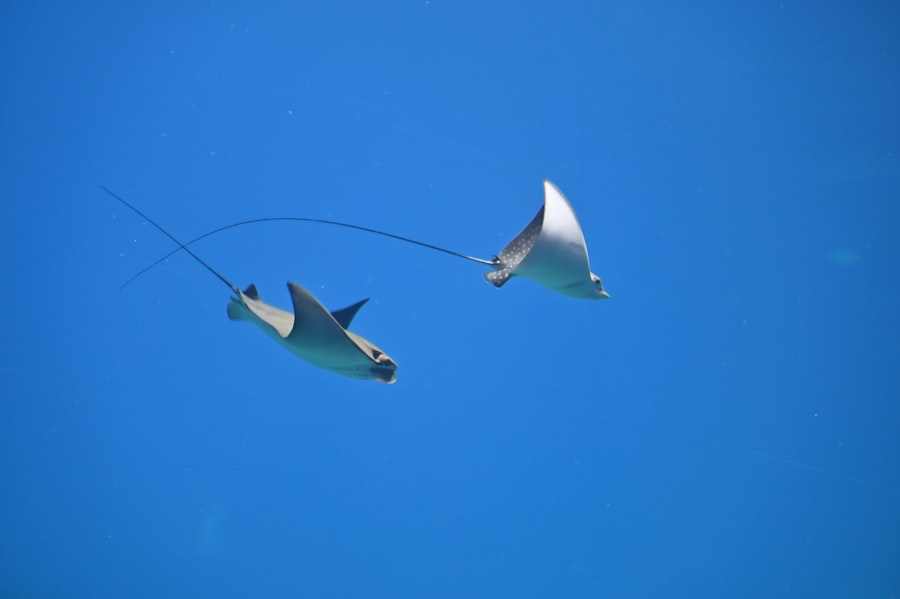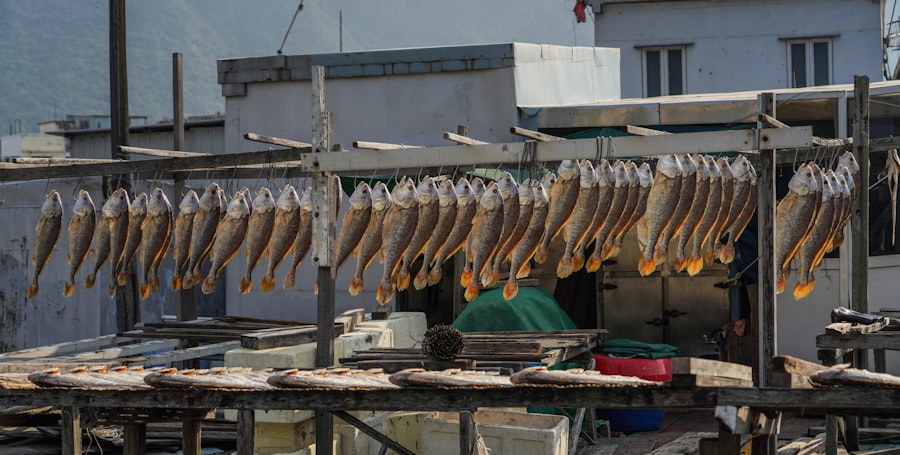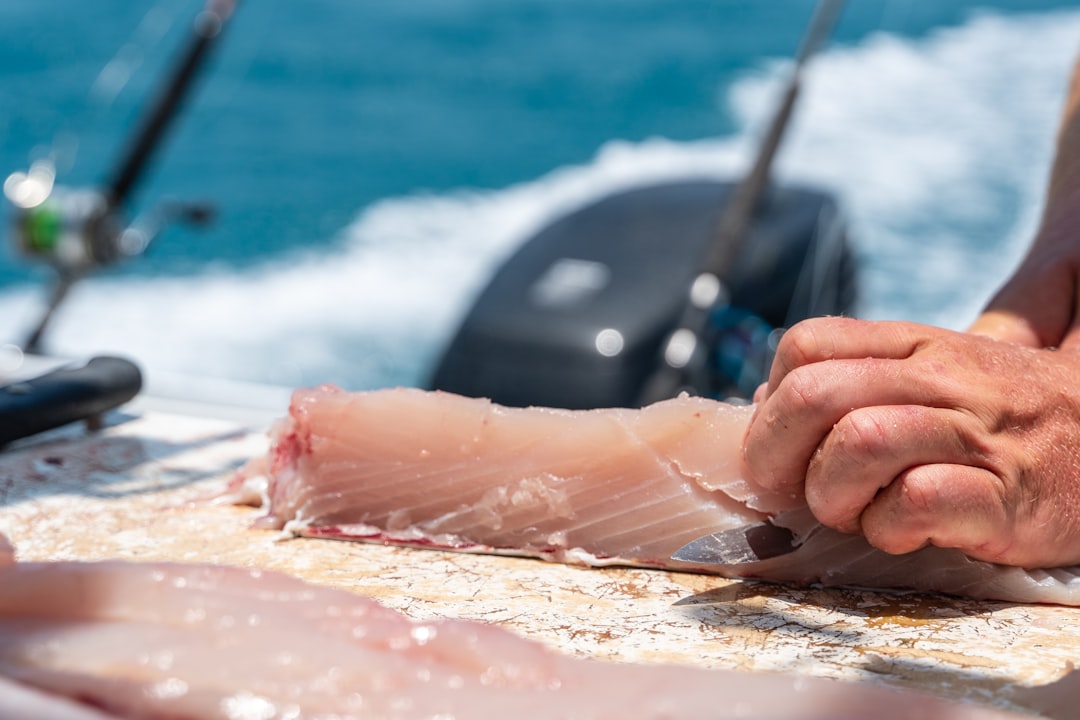Tuna fishing has long been a significant activity, both economically and culturally, across various regions of the world. This highly sought-after fish, known for its speed and strength, has captivated fishermen and consumers alike. The global demand for tuna, particularly species like bluefin, yellowfin, and albacore, has led to a thriving industry that spans oceans and continents.
Tuna fishing is not merely a commercial endeavor; it is also a way of life for many coastal communities that rely on the sea for their livelihoods. As such, understanding the nuances of tuna fishing is essential for appreciating its role in the global economy and its impact on marine ecosystems. The history of tuna fishing is rich and varied, with techniques evolving over centuries.
From ancient methods employed by indigenous peoples to the sophisticated technologies of today, the journey of tuna fishing reflects humanity’s relationship with the ocean. However, this relationship is increasingly strained due to overfishing and environmental concerns. As the demand for tuna continues to rise, so too does the need for sustainable practices that ensure the longevity of tuna populations and the health of marine ecosystems.
This article will explore traditional and modern tuna fishing methods, the impact of these practices on marine life, and the ongoing efforts to mitigate bycatch and promote sustainability in the industry.
Key Takeaways
- Tuna fishing has evolved from traditional to modern methods, impacting marine ecosystems significantly.
- Bycatch, the unintentional capture of non-target species, is a major concern in tuna fishing.
- Various technologies and practices are being developed to reduce bycatch and promote sustainability.
- Regulatory measures play a crucial role in managing tuna fishing and protecting ocean biodiversity.
- Sustainable tuna fishing practices are essential for the future health of marine environments and fish populations.
Traditional Tuna Fishing Methods
Traditional tuna fishing methods have been practiced for generations, often passed down through families and communities.
One of the most notable traditional methods is pole-and-line fishing, which involves using a single fishing rod with baited hooks to catch tuna one at a time.
This method not only minimizes bycatch but also allows fishermen to target specific species, ensuring that they do not deplete populations unnecessarily. Another traditional approach is the use of handlines, where fishermen drop lines with multiple hooks into the water. This method is labor-intensive but effective, allowing for selective fishing that reduces the risk of overfishing.
In many coastal communities, traditional tuna fishing is not just about catching fish; it is also a cultural practice that fosters community bonds and promotes sustainable stewardship of marine resources. These methods highlight the importance of maintaining a balance between human needs and environmental health, serving as a reminder of the wisdom embedded in traditional ecological knowledge.
Modern Tuna Fishing Methods

In stark contrast to traditional practices, modern tuna fishing methods have become increasingly industrialized and mechanized. The advent of large-scale commercial fishing operations has transformed the industry, enabling fishermen to catch vast quantities of tuna in a short period. Techniques such as purse seining involve encircling schools of tuna with large nets, allowing for the capture of thousands of fish at once.
While this method can be efficient, it raises significant concerns regarding sustainability and the health of tuna populations. Longlining is another prevalent modern technique that employs long lines with numerous baited hooks. While it can be effective in targeting specific species, longlining often results in substantial bycatch, including other fish species, seabirds, and marine mammals.
The scale and speed of modern tuna fishing operations have led to increased pressure on tuna stocks, prompting calls for more responsible practices. As the industry continues to evolve, it faces the challenge of balancing economic interests with environmental stewardship.
Impact of Tuna Fishing on Marine Ecosystems
| Metric | Value | Unit | Description |
|---|---|---|---|
| Annual Tuna Catch | 4.5 | million tonnes | Total global tuna catch per year |
| Bycatch Rate | 15 | % | Percentage of non-target species caught during tuna fishing |
| Shark Bycatch | 300,000 | individuals/year | Estimated number of sharks caught unintentionally annually |
| Marine Mammal Bycatch | 50,000 | individuals/year | Estimated number of marine mammals caught unintentionally annually |
| Impact on Tuna Population | 40 | % decline | Estimated decline in some tuna species populations over the last 20 years |
| Habitat Disruption | Moderate to High | N/A | Level of disruption to marine habitats due to fishing gear and practices |
| Ghost Fishing Gear | 10,000 | tonnes/year | Estimated weight of lost or abandoned tuna fishing gear contributing to marine pollution |
| Carbon Footprint | 1.2 | million tonnes CO2e/year | Estimated greenhouse gas emissions from tuna fishing operations globally |
The impact of tuna fishing on marine ecosystems is profound and multifaceted. Overfishing has led to significant declines in tuna populations, particularly for species like bluefin tuna, which are now classified as endangered. The removal of large predatory fish from the ocean can disrupt entire food webs, leading to imbalances that affect other marine species.
As apex predators, tuna play a crucial role in maintaining the health of marine ecosystems by regulating prey populations and contributing to biodiversity. Moreover, modern fishing practices often result in habitat destruction. The use of large nets can damage coral reefs and seafloor habitats, further exacerbating the decline of marine biodiversity.
The consequences extend beyond just fish populations; they affect entire ecosystems that rely on healthy marine environments. As scientists continue to study these impacts, it becomes increasingly clear that sustainable fishing practices are essential not only for the future of tuna but also for the overall health of our oceans.
Bycatch in Tuna Fishing
Bycatch refers to the unintentional capture of non-target species during fishing operations. In tuna fishing, bycatch is a significant concern due to the indiscriminate nature of many modern fishing methods. For instance, purse seines and longlines can inadvertently catch a wide range of marine life, including juvenile fish, sharks, sea turtles, and seabirds.
This unintended catch poses a serious threat to vulnerable species and contributes to declining populations across various marine taxa. The issue of bycatch is particularly pressing in the context of global biodiversity loss. Many species caught as bycatch are already facing threats from habitat destruction and climate change.
The high mortality rates associated with bycatch can lead to population declines that may take years or even decades to recover from. As awareness grows about the ecological consequences of bycatch, there is an urgent need for innovative solutions that address this issue while still allowing for sustainable tuna fishing practices.
Types of Bycatch in Tuna Fishing

The types of bycatch associated with tuna fishing are diverse and often include species that are ecologically or commercially important. Sharks are among the most commonly caught bycatch species in tuna fisheries; many shark populations are already under severe pressure from overfishing. The capture of these apex predators can have cascading effects on marine ecosystems, as their absence can lead to unchecked prey populations and altered community dynamics.
Sea turtles also frequently fall victim to tuna fishing operations. Many species of sea turtles are endangered or threatened, making their incidental capture particularly concerning. The use of longlines can entangle turtles, leading to injury or death before they can be released back into the ocean.
Additionally, seabirds are often caught on longlines as they dive for baited hooks, further contributing to declines in their populations. Understanding the types of bycatch associated with tuna fishing is crucial for developing targeted strategies aimed at reducing these unintended captures.
Mitigating Bycatch in Tuna Fishing
Efforts to mitigate bycatch in tuna fishing have gained momentum in recent years as stakeholders recognize the need for more responsible practices. One approach involves implementing gear modifications designed to reduce bycatch rates while maintaining target catch levels. For example, using circle hooks instead of traditional J-hooks can significantly decrease the likelihood of hooking non-target species like sea turtles and sharks.
Another strategy involves adopting time-area closures, which restrict fishing activities in specific locations or during certain times when vulnerable species are known to be present. By coordinating these closures with scientific data on species distribution and behavior, fisheries can minimize bycatch while still allowing for sustainable tuna harvesting.
Technology and Bycatch Reduction
Advancements in technology have opened new avenues for reducing bycatch in tuna fisheries. Innovations such as electronic monitoring systems allow for real-time data collection on catch composition and bycatch rates. This information can help fisheries managers make informed decisions about regulations and practices that minimize bycatch while maximizing target catches.
Additionally, new fishing gear technologies are being developed to enhance selectivity in tuna fisheries. For instance, using specialized nets that allow smaller fish or non-target species to escape can significantly reduce bycatch rates without compromising overall catch efficiency. The integration of technology into fishing practices represents a promising step toward more sustainable tuna fisheries that prioritize both economic viability and ecological integrity.
Sustainable Tuna Fishing Practices
Sustainable tuna fishing practices are essential for ensuring the long-term viability of tuna populations and marine ecosystems. These practices encompass a range of strategies aimed at minimizing environmental impacts while supporting local economies. One key aspect is adhering to catch limits based on scientific assessments of fish stocks, which helps prevent overfishing and allows populations to recover.
Another important component is promoting traceability within the supply chain. By ensuring that consumers can identify sustainably sourced tuna products, fisheries can incentivize responsible practices among fishermen and contribute to market demand for sustainable seafood options. Certification programs such as those offered by the Marine Stewardship Council (MSC) provide consumers with assurance that their purchases support environmentally responsible fisheries.
Regulatory Measures for Tuna Fishing
Regulatory measures play a critical role in managing tuna fisheries and ensuring their sustainability. International agreements such as those established by regional fisheries management organizations (RFMOs) set guidelines for catch limits, gear restrictions, and monitoring requirements aimed at protecting tuna stocks and reducing bycatch. These regulations are essential for fostering cooperation among nations that share fish stocks across international waters.
Enforcement mechanisms are equally important in ensuring compliance with these regulations. Effective monitoring systems that track fishing activities and catch data help deter illegal fishing practices that undermine conservation efforts. By strengthening regulatory frameworks and enhancing enforcement capabilities, governments can work together to safeguard tuna populations while supporting sustainable fishing practices.
Conclusion and Future of Tuna Fishing
The future of tuna fishing hinges on finding a balance between meeting global demand and preserving marine ecosystems for generations to come. As awareness grows about the ecological impacts of overfishing and bycatch, there is an increasing push toward sustainable practices that prioritize both economic viability and environmental health. Traditional methods offer valuable lessons in sustainability that can inform modern practices while technological innovations provide new tools for reducing bycatch.
Ultimately, collaboration among stakeholders—including fishermen, scientists, policymakers, and consumers—is essential for shaping a sustainable future for tuna fisheries worldwide. By embracing responsible practices and supporting regulatory measures aimed at protecting marine resources, society can ensure that future generations will continue to enjoy the benefits of this remarkable fishery while safeguarding the health of our oceans.
Tuna fishing methods often raise concerns about bycatch, which refers to the unintended capture of non-target species during fishing operations. For a deeper understanding of the implications of bycatch in tuna fishing, you can read a related article that discusses various fishing techniques and their impact on marine ecosystems. Check it out here: Bycatch in Tuna Fishing.
WATCH THIS! The $10 Billion Lie: Why Your “Dolphin-Safe” Tuna Isn’t Safe
FAQs
What is bycatch in tuna fishing?
Bycatch refers to the unintended capture of non-target species such as dolphins, sea turtles, sharks, and other marine life during tuna fishing operations.
Which tuna fishing methods are most associated with bycatch?
Purse seining, longlining, and gillnetting are common tuna fishing methods that can result in bycatch. Purse seining, especially when using fish aggregating devices (FADs), tends to have higher bycatch rates.
How does purse seining contribute to bycatch?
Purse seining involves encircling a school of tuna with a large net. When FADs are used to attract tuna, other species like juvenile tuna, sharks, and turtles can also be caught unintentionally.
What is longline fishing and its impact on bycatch?
Longline fishing uses a main line with many baited hooks to catch tuna. This method can accidentally catch seabirds, sharks, and sea turtles, contributing to bycatch.
Are there any measures to reduce bycatch in tuna fishing?
Yes, measures include using circle hooks, bird-scaring lines, avoiding fishing near sensitive habitats, modifying fishing gear, and implementing time-area closures to protect vulnerable species.
What role do fish aggregating devices (FADs) play in bycatch?
FADs attract not only tuna but also other marine species, increasing the likelihood of bycatch when purse seine nets are deployed around them.
Is bycatch harmful to marine ecosystems?
Yes, bycatch can negatively impact marine biodiversity by reducing populations of non-target species, some of which may be endangered or vulnerable.
How is bycatch monitored and reported in tuna fisheries?
Bycatch is monitored through onboard observers, electronic monitoring systems, and reporting requirements mandated by fisheries management organizations.
Can consumers influence bycatch reduction?
Consumers can support sustainable tuna fishing by choosing products certified by organizations that promote responsible fishing practices with low bycatch rates.
What international organizations regulate tuna fishing and bycatch?
Regional Fisheries Management Organizations (RFMOs) such as the International Commission for the Conservation of Atlantic Tunas (ICCAT) and the Western and Central Pacific Fisheries Commission (WCPFC) set regulations to manage tuna stocks and reduce bycatch.
